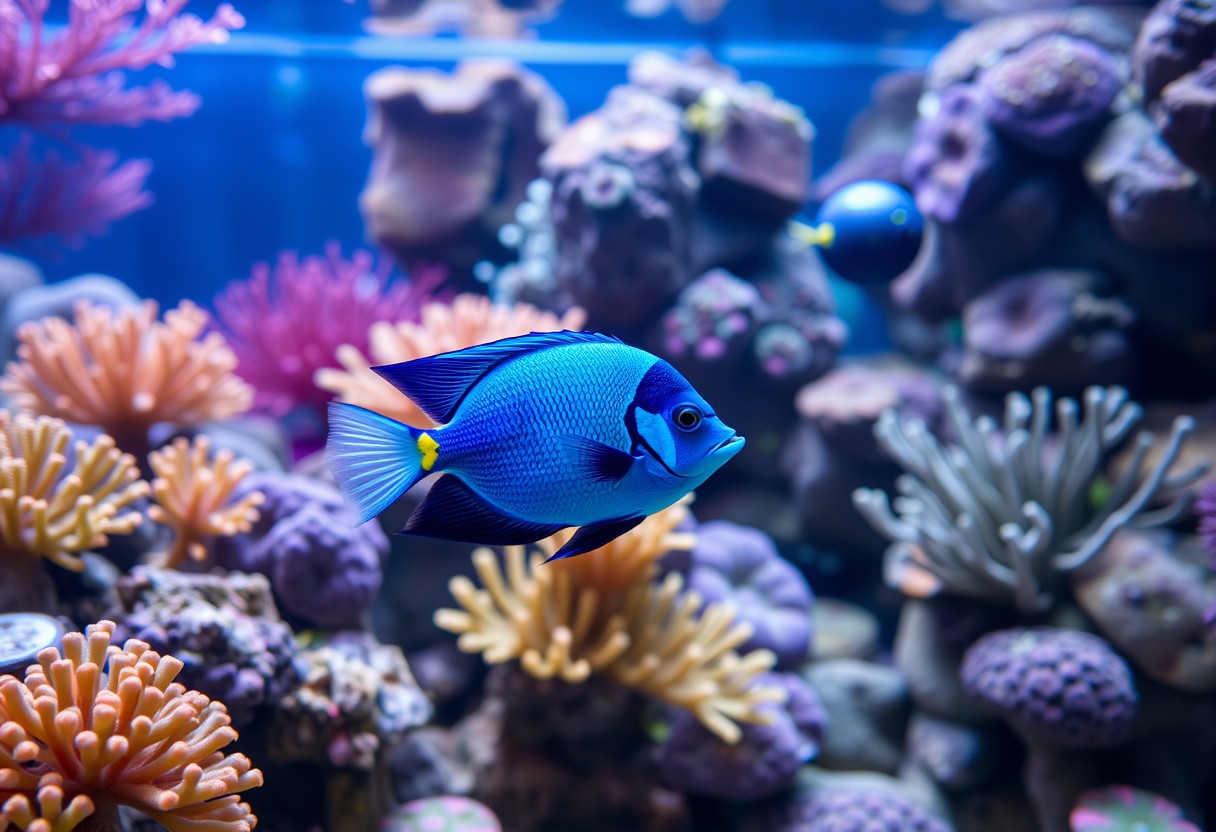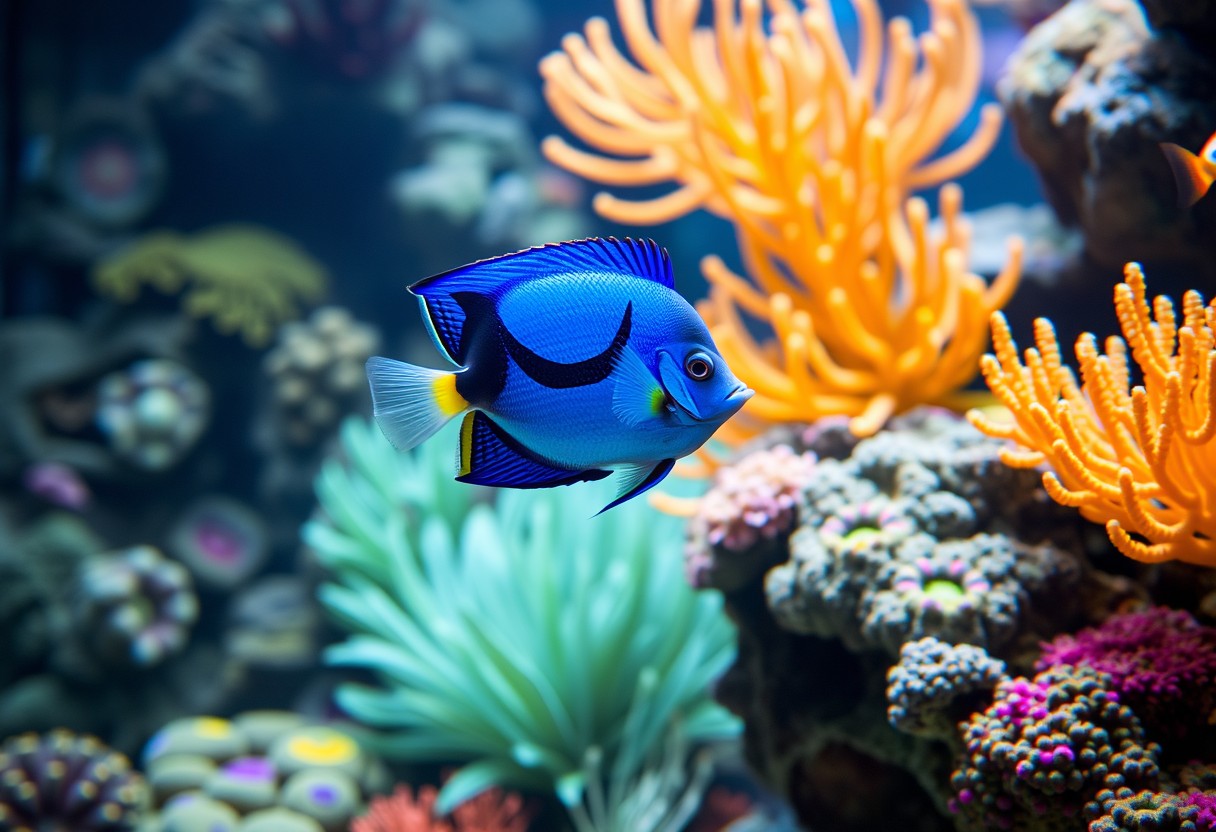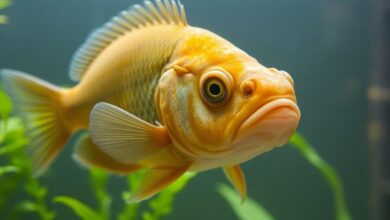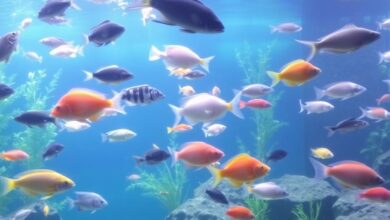
You will find that the Philippine Blue Angelfish is not just a stunning addition to your aquarium; it is also a smart choice for enhancing your underwater environment. Its vibrant blue and yellow coloration makes it a true centerpiece, while its hardiness and adaptability can benefit both novice and experienced aquarists. In this post, we will uncover seven compelling reasons why you should consider adding this enchanting fish to your tank, from its captivating behavior to its lesser-known health benefits, ensuring you make an informed decision for your aquatic setup.

Key Takeaways:
- Stunning Appearance: The Philippine Blue Angelfish boasts a vibrant blue color and unique patterns, making it a visually striking addition to any aquarium.
- Peaceful Nature: Generally known for their calm temperament, these fish can coexist with various tank mates, enhancing community aquarium dynamics.
- Dietary Needs: The Philippine Blue Angelfish requires a specialized diet, including algae and high-quality flakes, ensuring optimal health and coloration.

Unique Aesthetic Appeal
While the Philippine Blue Angelfish is known for its vibrant beauty, this species also adds a sense of elegance and uniqueness to your aquarium. With their captivating colors and graceful movements, these fish stand out, creating a stunning focal point in your tank. Their striking appearance is complemented by their playful nature, making them a joy to observe. You’ll find that introducing this fish not only enhances the visual appeal of your aquarium but also brings life and personality to your aquatic environment.
Striking Coloration
One of the most appealing aspects of the Philippine Blue Angelfish is its stunning color palette. This species showcases a mesmerizing blend of deep blue and contrasting golden-yellow hues. The vibrant colors create a dramatic display that can elevate the overall aesthetic of your tank. As the light reflects off their scales, you’ll be captivated by the dynamic shimmer, making these fish a captivating addition to any marine setup.
Elegant Body Shape
Above all, the Philippine Blue Angelfish features a beautiful, streamlined body shape that exudes grace and sophistication. Their elongated fins and graceful movements create a sense of fluidity as they glide through the water. This elegant body design not only enhances their charm but also allows them to adapt and thrive in your aquarium, making them a perfect choice for both novice and seasoned aquarists alike.
Even more impressive, the elegant body shape of the Philippine Blue Angelfish is designed for both beauty and functionality. Its sleek, torpedo-like outline enables it to swim effortlessly through the water, ensuring that it can navigate its environment with ease. Not only does this contribute to its striking visual appeal, but it also promotes a healthier lifestyle in your tank. With the right care, the fish’s natural grace will keep your aquarium lively and vibrant, adding a sense of serenity and movement that is enriching to watch.
Compatibility with Community Tanks
It is vital to consider the compatibility of the Philippine Blue Angelfish with other species in your community tank. These exquisite fish can thrive in a variety of environments, but choosing the right companions is key to maintaining a harmonious aquarium. For helpful insights, check out the discussion on Philippine Blue Angels | Freshwater Aquarium Journals …
Peaceful Nature
Among the various angelfish, the Philippine Blue Angelfish is known for its generally peaceful nature. This characteristic makes it an excellent addition to community tanks, as it tends to avoid aggression and can coexist with a variety of other fish.
Ideal Tank Mates
Above all, suitable tank mates for the Philippine Blue Angelfish include species like tetras, rasboras, and gouramis. These fish share a calm temperament, making them excellent companions that won’t stress your angelfish.
Plus, you should ideally avoid pairing your Philippine Blue Angelfish with aggressive or overly large species, which can lead to stress or harm for your angelfish. Fast-moving fish and those that nip fins may not mix well either. Opt for smaller, docile species that appreciate similar water conditions to ensure a tranquil environment within your community tank.
Easy Care Requirements
Your journey with the Philippine Blue Angelfish can be a breeze with its easy care requirements. This stunning fish generally thrives in a well-maintained aquarium, making it suitable for both beginners and experienced aquarists alike. When you set up your tank, ensure you provide adequate filtration and regular water changes to keep your fish healthy. You can find high-quality specimens like the Premium Philippine Blue Angelfish – AquariumFish.net that will flourish in your care.
Feeding Habits
One of the joys of keeping the Philippine Blue Angelfish is its uncomplicated feeding habits. These fish are omnivores, enjoying a balanced diet of high-quality flakes, pellets, and frozen foods rich in protein.
Optimal Tank Conditions
Along with its feeding ease, the Philippine Blue Angelfish requires specific tank conditions to thrive. A tank size of at least 50 gallons is ideal, with a temperature range of 76-82°F and pH levels between 6.8-7.6.
But setting up your tank environment shouldn’t be underestimated. Providing ample hiding spots, like rocks and plants, is necessary for the fish’s sense of security. Inadequate space can lead to stress and aggressive behaviors, while water that is not well-filtered or outside the recommended temperature can cause serious health issues. Be sure to monitor your aquarium parameters regularly to ensure a harmonious and positive environment for your beautiful fish.
Interesting Behavior
Many aquarists find the Philippine Blue Angelfish to be fascinating due to their unique behaviors. Observing them can be a delight, as they exhibit a range of entertaining actions, from playful swimming patterns to curious interactions with tank mates. Their vibrant disposition adds a dynamic element to your aquarium, encouraging engagement not only from you but also from everyone who appreciates the beauty of your tank’s ecosystem.
Territorial Tendencies
Across their habitat, Philippine Blue Angelfish are known for their strong territorial behavior. You might witness them defending their space fiercely, which can lead to confrontations with other tank inhabitants. It’s important to provide ample room and hiding spots in your tank to minimize aggression, ensuring your angelfish can establish their territory without unnecessary stress or harm.
Activity Levels
About Philippine Blue Angelfish, they are moderately active swimmers, which makes them intriguing to observe. You’ll notice them cruising around the tank, often darting in and out of coral structures and hiding spots. This activity level helps promote a lively environment in your aquarium, providing entertainment as you watch them explore their surroundings.
In addition to their mesmerizing swimming patterns, the activity levels of your Philippine Blue Angelfish contribute significantly to their overall health. A well-structured tank with adequate space allows them to engage in their natural behavior, which helps prevent stress and promotes strong immune function. Providing plenty of decorative elements, such as rocks and plants, not only enhances your aquarium’s aesthetic but also offers your angelfish the opportunity for exploration and security.
Availability and Accessibility
After exploring the allure of the Philippine Blue Angelfish, you may be eager to know how to acquire this stunning species for your aquarium. Fortunately, these fish are increasingly popular in the aquarium trade, making them relatively easy to find. You can always check out resources like Philippines Blue Angelfish to see highlights and tips from fellow enthusiasts.
Common Sources
Above all, your best bet for finding Philippine Blue Angelfish is through specialized marine fish retailers and reputable online stores. Local fish stores may also carry them, but availability can vary. Checking local aquarium clubs or forums can provide leads on where to find this beautiful species.
Pricing Overview
Along with availability, you should consider the pricing of Philippine Blue Angelfish before making a purchase.
Due to their vibrant colors and unique characteristics, Philippine Blue Angelfish can range in price from $30 to $70 depending on the size and health of the fish. It’s important to purchase from trusted sellers to ensure you receive a healthy specimen, as prices can vary widely based on location and quality. Always be mindful of potential shipping fees if you are buying online, as this can add to your overall cost.

Environmental Impact
Now, there are several factors to consider regarding the environmental impact of keeping Philippine Blue Angelfish in your tank. These vibrant creatures are often sourced from the wild, which can lead to overfishing and habitat destruction. By understanding these impacts, you can make more informed choices for your aquarium, ultimately benefiting both your fish and the ecosystems they originate from.
Sustainable Practices
Above all, adopting sustainable practices is necessary when adding the Philippine Blue Angelfish to your aquarium. You can seek responsibly sourced fish from reputable breeders or retailers who prioritize environmental conservation. By supporting these practices, you contribute to preserving natural habitats while enjoying your stunning aquatic centerpiece.
Captive Breeding Benefits
Environmental benefits of captive breeding cannot be overstated. You play a part in reducing pressure on natural populations and ecosystems by choosing aquacultured Philippine Blue Angelfish.
In fact, opting for captive-bred angelfish helps ensure that wild populations can recover and thrive, preserving biodiversity in their natural habitat. Additionally, captive-bred fish are often more resilient and better adapted to aquarium life, which means they are less likely to experience stress and disease. This choice not only supports sustainable aquaculture but also enhances your overall aquarium experience, promoting a healthier environment for your stunning fish.
Final Words
Now that you’ve explored the seven compelling reasons to add the Philippine Blue Angelfish to your tank, you can confidently make an informed decision. This vibrant species not only enhances the aesthetic appeal of your aquarium but also brings a unique personality to your aquatic environment. With proper care, the Philippine Blue Angelfish can thrive and become a stunning centerpiece that captivates your attention and enriches your tank’s ecosystem. Make the leap and enjoy the beauty and charm that this exquisite fish can offer to your underwater habitat.
FAQ
Q: What are the main characteristics of the Philippine Blue Angelfish?
A: The Philippine Blue Angelfish is known for its stunning electric blue coloration and vibrant yellow accents. They have a distinctive body shape that is characteristic of angelfish species, with a laterally compressed body and long, flowing fins. Adult Philippine Blue Angelfish typically reach lengths of up to 6 inches, making them an eye-catching addition to any aquarium. Their unique coloration not only enhances the aesthetic appeal of the tank but also plays a role in their natural habitat, where these colors can act as both camouflage and a deterrent to predators.
Q: What are the ideal tank conditions for keeping Philippine Blue Angelfish?
A: Philippine Blue Angelfish thrive in stable and well-maintained aquarium conditions. The recommended tank size is at least 100 gallons to provide ample space for swimming and hiding, as these fish can become territorial. The water temperature should be maintained between 75°F and 82°F (24°C to 28°C), with a pH level between 8.1 and 8.4. It’s crucial to ensure good water quality through regular water changes and effective filtration. Additionally, including live rock and plenty of hiding spots in the tank will help mimic their natural environment, promoting their well-being and reducing stress.
Q: Can Philippine Blue Angelfish be kept with other fish species?
A: Yes, Philippine Blue Angelfish can coexist with certain fish species, but careful selection is necessary to ensure compatibility. Ideal tank mates include peaceful and similarly sized species that can handle the angel’s sometimes territorial nature. Some suitable companions include clownfish, tangs, and non-aggressive wrasses. It’s best to avoid smaller fish that may be seen as prey, as well as overly aggressive species that could cause stress or aggression towards the angelfish. Keeping the tank well-stocked with hiding spots will help reduce territorial disputes while promoting a harmonious community tank.





